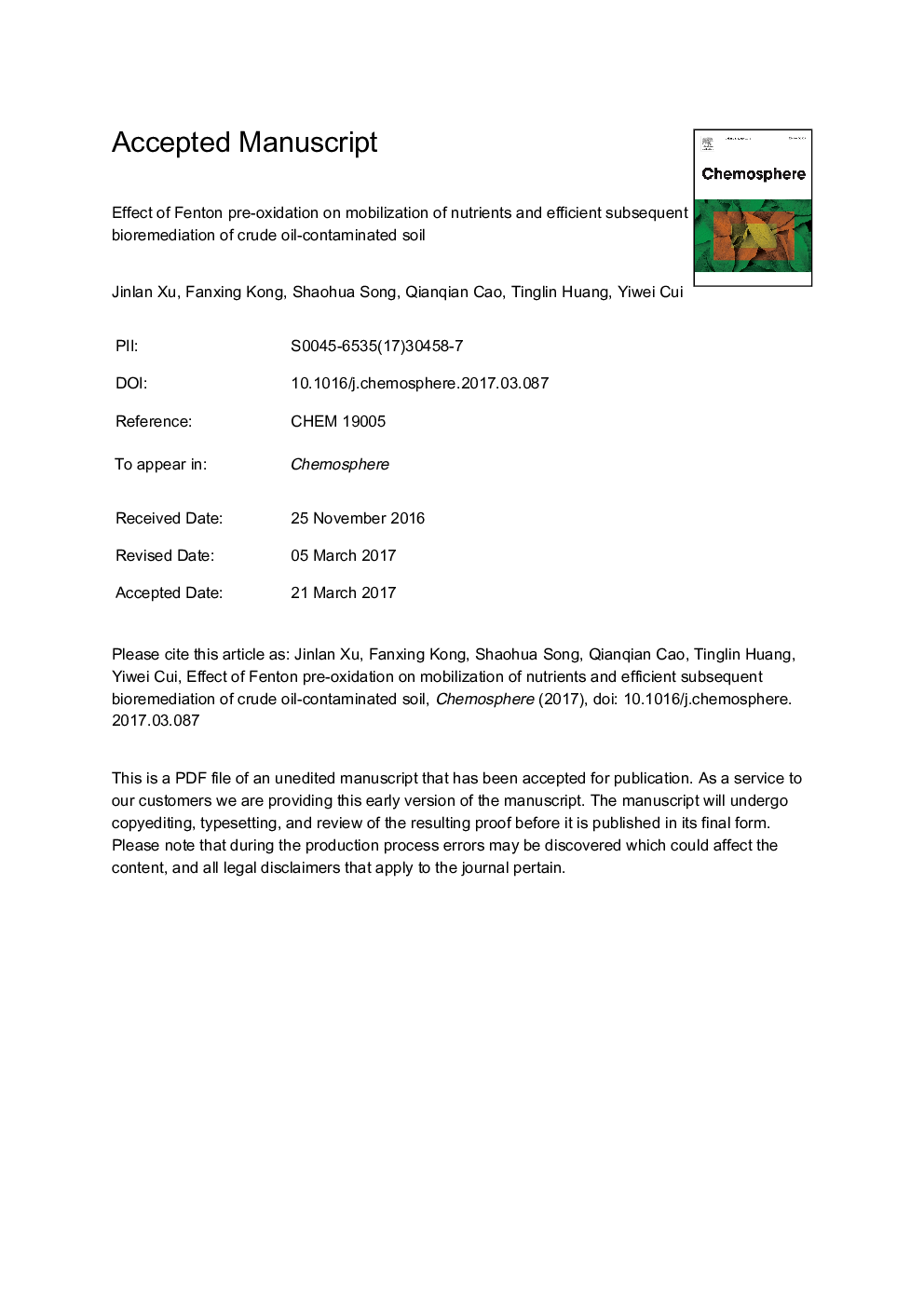| Article ID | Journal | Published Year | Pages | File Type |
|---|---|---|---|---|
| 5746154 | Chemosphere | 2017 | 37 Pages |
Abstract
Fenton pre-oxidation and a subsequent bioremediation phase of 80 days were used to investigate the importance of matching concentration of residual indigenous bacteria and nutrient levels on subsequent bioremediation of crude oil. Experiments were performed using either high (>107.7 ± 0.2 CFU/g soil) or low (<105.9 ± 0.1 CFU/g soil) concentrations of bacteria and three different nutrient levels: enough (C/N > 9.8), moderate (C/N:5-9.8), and lacking nutrient level (C/N < 5) conditions. Weak Fenton pre-oxidation (225 mM H2O2 and 2.9 mM Fe2+) resulted in highly matching between nutrient level and the population of residual indigenous bacteria. Up to 53% of total petroleum hydrocarbon (TPH) and 58% of main hydrocarbon (C15C25, during the first 10 days) were removed from the soil. Under matching conditions, the activity of indigenous bacteria and nutrient mobilization were enhanced, promoting the bioremediation of crude oil. In addition, the biodegradation of long chain molecules (C26C30) required a high level of NH4+-N.
Keywords
Related Topics
Life Sciences
Environmental Science
Environmental Chemistry
Authors
Jinlan Xu, Fanxing Kong, Shaohua Song, Qianqian Cao, Tinglin Huang, Yiwei Cui,
